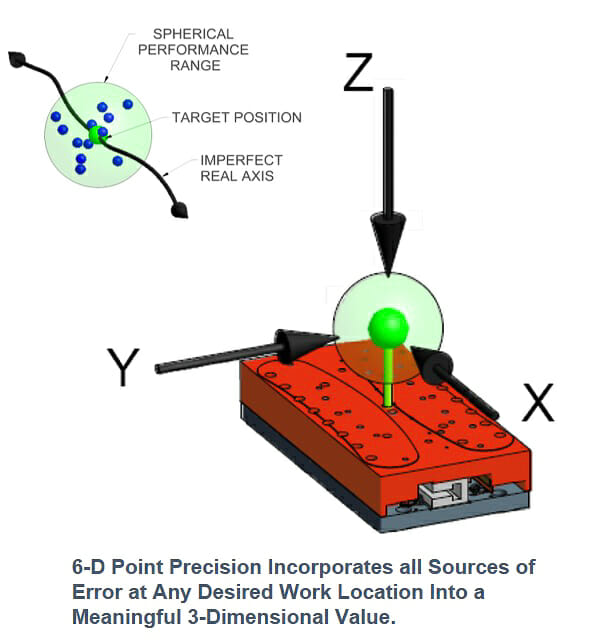(Arvada, CO, USA, 15th August 2023) ALIO Industries – an Allied Motion Company — acknowledges the publication of the ASME B5.64 standard “Methods for the Performance Evaluation of Single Axis Linear Positioning Systems” last week as a significant step in the redefinition of measurement of precision in motion systems, something that as a company ALIO has been championing for over a decade.
The ASME standard suggests that when it comes to defining the precision of ultra-precise single axis linear motion systems such as those produced by ALIO, companies should move away from conventional planar methodologies, and towards 6D point precision specifications.
Bill Hennessey, President of ALIO picks up the story, “When analyzing motion control solutions that provide sub-micron and nanometer-level accuracy, ALIO has contended for a number of years that a new language is necessary, and new standards are required to indicate the real levels of precision that different motion control solutions can achieve. So saying, nearly 12 years ago, ALIO trademarked the phrases Point Precision® and 6D Point Precision® to protect its position in the market.

All motion systems operate in 3-dimensional space and have errors in 6 degrees of freedom (6-DOF). However, motion systems are often only characterized by performance data of a single or subset of these 6-DOF. This practice leaves several error sources unaccounted for in performance data and specifications. ALIO has contended for a considerable amount of time that repeatability performance for metrology inspection and manufacturing systems must be analyzed and specified using a “point repeatability” method that accounts for 6D spatial errors in order to provide true representation of nanometer-precision performance. The recent publication of ASME B5.64 shows that standards agencies also see the value behind this methodology.
Historically, specifying repeatability as a single number representing the variation in linear displacement along an axis of travel, i.e. plane repeatability was valid as the repeatability specifications were large enough that other error factors were only a small percentage of the total error and could be ignored. However, this test method makes a critical assumption, namely that the plane only moves in one dimension and the axis is perfectly straight. At the nanometer-level, this assumption is not realistic.
The new ASME standard recognises that in nanometer-level precision systems, ‘other’ errors that were previously ignored in less accurate systems often become equal to or greater contributors to the 6D repeatability performance. At the nanometer-level, the axis of travel should actually be shown as bending and twisting through three-dimensional space and thus plane visualization becomes meaningless as it will tip, tilt, and twist as the stage moves along the axis. The stage moves in 6D space, therefore neglecting these additional error sources can result in a misrepresentation of actual stage repeatability performance.
Each linear (or angular) direction the stage moves (or rotates) in results in a positional error in that direction. That motion, which must not be neglected when nanometer-precision is desired, will have an associated repeatability of that error motion. Each point on a stage mounting surface will move in 3D space as of a result of this error motion in 6-DOF. It is the point repeatability of an infinite number of points attached to a stage that must be characterized by testing and specification data. Thus, each point repeatability will result in a spherical repeatability range.
Hennessey concludes, “ALIO applauds the new ASME standard officially published and made available a few days ago. In our view, this is a very important step towards True Nano® Positioning, allowing customers the ability to choose the best motion system for their applications based on a common standard rather than believing misleading, single dimensional specifications that vary from supplier to supplier. Because ALIO has already been applying these newly published measurement procedures for over a decade, our customers find themselves in the lucky position of not having to worry about the true performance of their products. ALIO will continue to be at the forefront of innovation and progress in the precision positioning industry. The new standard methods for the performance evaluation of single-axis positioning systems can only be the beginning though. Today’s motion systems are more complex, usually consisting of not just one linear axis, but combining multiple axis to 2, 3, 4 or 6 or more degrees of freedom. ALIO is ready to drive these next steps with the ASME and all other contributors to the ASME B5.64 to further improve the transparency and creditability of the precision motion world.”




